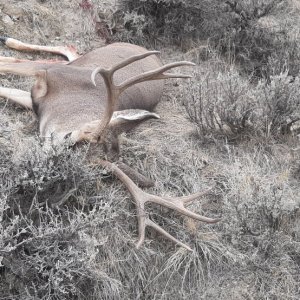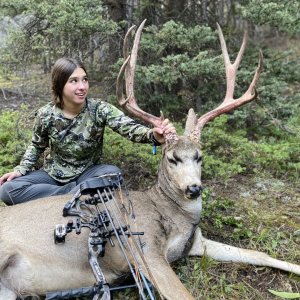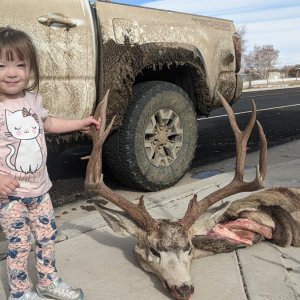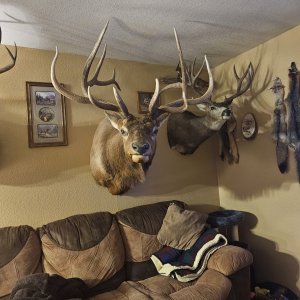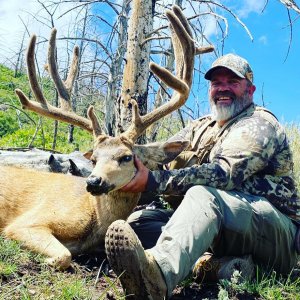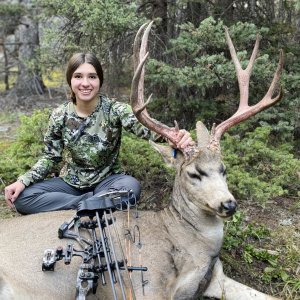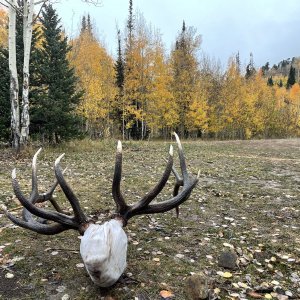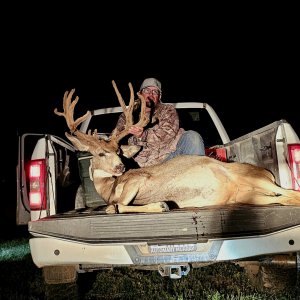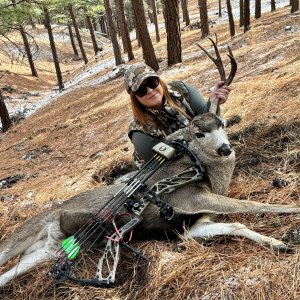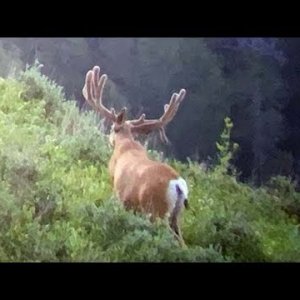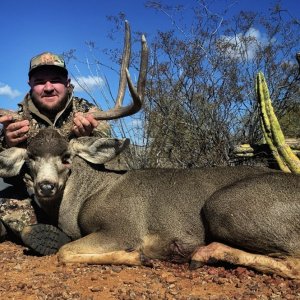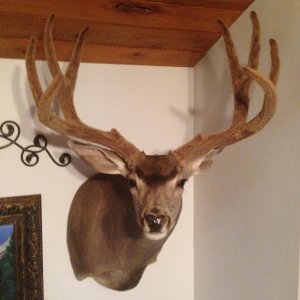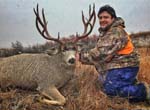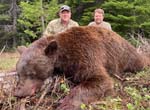HalfAce
Very Active Member
- Messages
- 1,153
Was taking a look at some recent news on the state site and came across this. The animals already had a couple of bad winters, and now another one that may be worse?... Hopefully it warms up, if it doesnt, i dont think there will be a positive outcome this spring.
Wednesday, January 26, 2011
Fish & Wildlife - Region 7
It's been a tough winter so far and the calendar suggests we still have several months ahead of us. Typically late winter and early spring months can continue to produce heavy snow fall.
Especially hard hit are resident wildlife populations, such as, antelope, mule deer, pheasants, turkey?s and Hungarian partridge.
The National Weather Service in Glasgow, MT. has reported Wibaux has accumulated 39.9 inches of snow, Glendive 26.2, Bloomfield 38.0 and Sidney 42 inches. Accumulation in southeastern Montana is above normal and snow is predicted to continue to move into the region.
During the previous several years? winter conditions have been comparably mild resulting in very limited mortality among resident wildlife populations. Populations responded with an increase in numbers that were consistently above the normal long term average. This population expansion provided FWP wildlife biologists an opportunity to increase and liberalize hunting permit and license opportunities. Conversely, FWP biologists must respond to reduced population levels through a reduction, or perhaps elimination of some permit and license?s. FWP biologists must respond to current conditions, winter mortality, herd health and trend survey results.
Impacts to upland game bird populations may be severe in some locations. Snow conditions restrict the bird?s ability to forage and prolonged cold begins to wear the bird?s resistance down. Cold increases the daily nutritional requirements and over time it uses up the fat reserves the birds need to weather such harsh conditions. In most locations birds are concentrated around hay stacks, tree rows and farm yards. These locations can provide a food source for wildlife in harsh winter conditions but prolonged exposure to deep cold and snow may result in winter mortality.
Resident wildlife populations experienced a tough winter last year and so far this year snow and cold temperatures have been worse. FWP personnel are already seeing incidents of winter mortality. Surveys by wildlife biologists found antelope numbers to be 30 ? 40% below the long term average in the fall of 2010. Mule deer surveys found the population to be 12% below the long term average. It can reasonably be expected that future surveys will find reduced population numbers. Wildlife populations can be predicted to suffer winter mortality due to these severe winter conditions. Fish, Wildlife and Parks will complete another sequence of surveys prior to setting 2011 hunting season quotas but it is reasonable to assume, if current conditions persist that harvest quotas for mule deer does and antelope may have to be reduced.
So far white-tail deer and elk populations seem to be weathering the harsh winter conditions. The public needs to know that our sustained winter conditions are having impacts on our local wildlife which may result in reduced hunter opportunity in the future.
Wednesday, January 26, 2011
Fish & Wildlife - Region 7
It's been a tough winter so far and the calendar suggests we still have several months ahead of us. Typically late winter and early spring months can continue to produce heavy snow fall.
Especially hard hit are resident wildlife populations, such as, antelope, mule deer, pheasants, turkey?s and Hungarian partridge.
The National Weather Service in Glasgow, MT. has reported Wibaux has accumulated 39.9 inches of snow, Glendive 26.2, Bloomfield 38.0 and Sidney 42 inches. Accumulation in southeastern Montana is above normal and snow is predicted to continue to move into the region.
During the previous several years? winter conditions have been comparably mild resulting in very limited mortality among resident wildlife populations. Populations responded with an increase in numbers that were consistently above the normal long term average. This population expansion provided FWP wildlife biologists an opportunity to increase and liberalize hunting permit and license opportunities. Conversely, FWP biologists must respond to reduced population levels through a reduction, or perhaps elimination of some permit and license?s. FWP biologists must respond to current conditions, winter mortality, herd health and trend survey results.
Impacts to upland game bird populations may be severe in some locations. Snow conditions restrict the bird?s ability to forage and prolonged cold begins to wear the bird?s resistance down. Cold increases the daily nutritional requirements and over time it uses up the fat reserves the birds need to weather such harsh conditions. In most locations birds are concentrated around hay stacks, tree rows and farm yards. These locations can provide a food source for wildlife in harsh winter conditions but prolonged exposure to deep cold and snow may result in winter mortality.
Resident wildlife populations experienced a tough winter last year and so far this year snow and cold temperatures have been worse. FWP personnel are already seeing incidents of winter mortality. Surveys by wildlife biologists found antelope numbers to be 30 ? 40% below the long term average in the fall of 2010. Mule deer surveys found the population to be 12% below the long term average. It can reasonably be expected that future surveys will find reduced population numbers. Wildlife populations can be predicted to suffer winter mortality due to these severe winter conditions. Fish, Wildlife and Parks will complete another sequence of surveys prior to setting 2011 hunting season quotas but it is reasonable to assume, if current conditions persist that harvest quotas for mule deer does and antelope may have to be reduced.
So far white-tail deer and elk populations seem to be weathering the harsh winter conditions. The public needs to know that our sustained winter conditions are having impacts on our local wildlife which may result in reduced hunter opportunity in the future.

